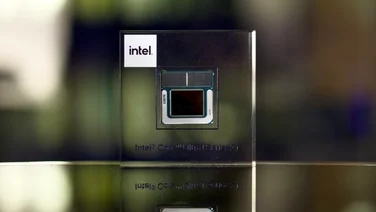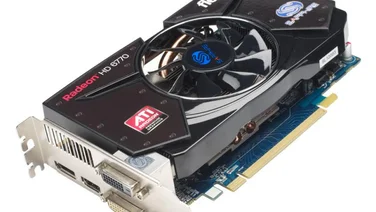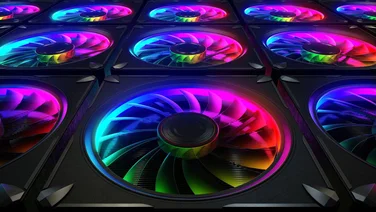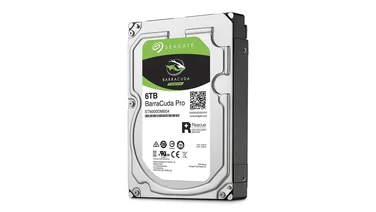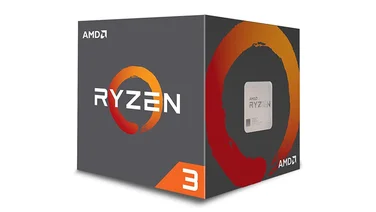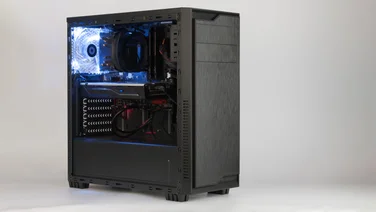To help us provide you with free impartial advice, we may earn a commission if you buy through links on our site. Learn more

- Good performance
- Can handle most games at medium settings
- Runs quietly
- Not ideal for VR
- Only suitable if you want a smaller, discrete GPU
Almost a year after Nvidia first announced its next-generation RTX 20-series cards, we finally have a replacement for the entry-level GTX 1050 as well. The GTX 1650 is a world away from the monster frame rates and real-time ray-tracing of its RTX graphics card cousins, joining the GTX 1660 Ti and GTX 1660 in the more affordable 16-series, but it’s still an interesting proposition, especially when it’s in the tiny form factor of this Zotac model.
The underlying GPU is the cheapest of Nvidia’s current crop, and without a GTX 1650 Ti to compete with, is the only truly ‘budget’ GPU of the entire generation. To help shoulder this responsibility, it has 4GB of GDDR5 memory – twice that of the GTX 1050 – as well as an increased CUDA core count of 896. GTX 1650 processors have a stock boost clock of 1,665MHz, but Zotac has overclocked this ever so slightly to 1,695MHz.
READ NEXT: These are the best graphics cards you can buy
Zotac Gaming GeForce GTX 1650 OC review: Design
Its design comprises a simple, single-fan cooler, with the bare minimum of video outputs on the rear: one HDMI port, one DisplayPort and one DVI-D connector. There’s no VirtualLink USB Type-C port for VR headsets, as you’d get on the 20-series cards. This simplicity has its benefits. At only 151mm long, it’s about as minuscule as GTX cards come, and there are no 6-pin or 8-pin PSU power connectors because it doesn’t need any.
The GeForce GTX 1650 OC can be powered entirely through its PCI-E x16 slot on the motherboard, which when combined with its small stature, makes it potentially perfect for compact PC builds where the case might not allow for longer cards or have adequate cable routing.
Zotac Gaming GeForce GTX 1650 OC review: Performance
It’s no surprise that the GTX 1650 outpaces the GTX 1050 on core performance, but in most tests, it’s markedly faster than the GTX 1050 Ti as well. This is most dramatically visible in our Dirt Showdown test, where at 1,920×1,080 with Ultra settings enabled, the newest GPU averaged 101fps – far more than the GTX 1050, which managed 74fps, and the GTX 1060 Ti’ 81fps. It’s also a highly favourable matchup against AMD’s Radeon RX 560, another budget GPU, which scored 75fps.

The GTX 1650 has improved ability at 2,560×1,440, too: at this resolution it stayed smooth in Dirt, producing 76fps with Ultra settings still in place. More graphically demanding games will push the GTX 1650 to its limits. Metro: Last Light Redux averaged a barely acceptable 31fps at 1,920×1,080 with the Very High preset, and going up to 2,560×1,440 dropped this to a spluttering 17fps.
Nonetheless, at least it actually reaches the 30fps mark at 1080p, where the GTX 1050, GTX 1050 Ti and RX 560 all fall short. 1440p isn’t entirely out of the question, either: turn off SSAA and 17fps jumps to 34fps, enough to get by with.
READ NEXT: Don’t miss out on these incredible CPUs
Zotac Gaming GeForce GTX 1650 OC review: Features
Tomb Raider runs well, too, with its integrated benchmark ending at 77fps at 1,920×1,080 and 48fps at 2,560×1,440, both with the Ultimate quality setting and FXAA smoothing out edges. Once again, that’s a total victory for the GTX 1650 over its budget rivals, as at 1080p, the GTX 1050 produced 55fps, the GTX 1050 Ti 62fps and the RX 560 a mere 49fps.
Finally, although we wouldn’t call this an ideal graphics card for VR, it can handle most current games at medium settings. That’s according to the SteamVR Performance Test, which gave it a medium-tier score of 5.4. Performance-wise, the GTX 1650 leads the way on what you can expect from an overtly low-end GPU. Of the other three, the only one that’s still worth buying is the GTX 1050, and that’s only if you absolutely can’t spend more than £100.

However, it’s not just budget cards that the GTX 1650 has to contend with. The Radeon RX 570 has plummeted in price from the mid-£200 range to between £120 and £140, putting this mid-ranger right next to Nvidia’s latest. The specific Asus ROG Strix RX 570 model we tested is just £129, and its own benchmark results confirm that it’s a far better deal: at 1080p, it scored 118fps in Dirt, 45fps in Metro and 92fps in Tomb Raider.
That’s a heavy blow to the GTX 1650 as an actual buying proposition, but it’s not necessarily a fatal one. Its petite dimensions allow it to fit into Mini-ITX cases that even smaller partner variants of the RX 570 can’t, and it’s a lot more efficient, too. We recorded Asus’s RX 570 using up to 155W under load, but according to GPU-Z, the RX 560 only ever peaked at 90% of its 75W TDP – about 68W.
Despite the single fan, the GTX 1650 also runs quietly and very cool. An ideal temperature of 30°C is fine, but the GTX 1650’s load temperature of 53°C is downright excellent, and it only peaked at 54°C. That’s much chillier than the RX 570, which generally ran at around 72°C. Of course, the main reason to buy a graphics card is performance, and on that alone the RX 570 is unquestionably the better buy.
Zotac Gaming GeForce GTX 1650 OC review: Verdict
For the niche appeal of its size and efficiency, the GTX 1650 scrapes a fourth star, but a recommendation applies only if you specifically need a smaller, more discrete GPU.
| Specifications | |
|---|---|
| GPU | Nvidia GeForce GTX 1650 |
| Memory | 4GB GDDR5 |
| Graphics card length | 151mm |
| Warranty | Five years RTB |


